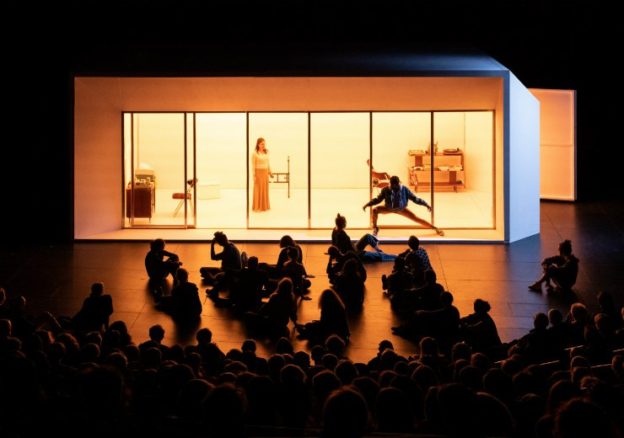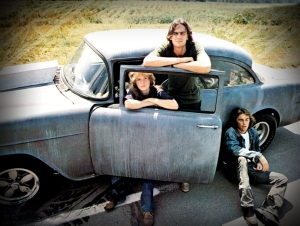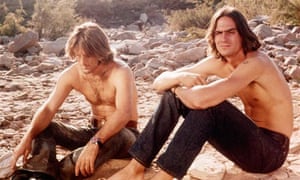Everyone knows the opening sentence of Joan Didion’s 1968–1978 essay “The White Album”:
We tell ourselves stories in order to live.
The 40-page piece jump-cuts through the undefined haze of Didion’s version of the 1960s in California. Stories are told, interpretations are made, impressions and coincidences noted, but verifiable sense and significance remain elusive:
We live entirely, especially if we are writers, by the imposition of a narrative line upon disparate images, by the “ideas” with which we have learned to freeze the shifting phantasmagoria which is our actual experience.
Or at least we do for a while.

For Didion, things began to change in 1966:
I am talking here about a time when I began to doubt the premises of all the stories I had ever told myself, a common condition but one I found troubling… During these years I appeared, on the face of it, a competent enough member of some community or another… This was an adequate enough performance, as improvisations go. The only problem was that my entire education, everything I had ever been told or had told myself, insisted that the production was never meant to be improvised: I was supposed to have a script, and I had mislaid it.

Didion—who lived during this period in a large rented house on Franklin Avenue, in a part of Hollywood that had once been expensive and was now described by one of my acquaintances as a “senseless-killing neighborhood”—takes us to a recording session with Jim Morrison and The Doors, and to the murder trials for the killers of Ramon Navarro and Sharon Tate. She spends time with the Black Panthers—with Eldridge and Kathleen Cleaver in their home and with Huey Newton in jail:
As it happened I had always appreciated the logic of the Panther position, based as it was on the proposition that political power began at the end of the barrel of a gun… and I could appreciate as well the particular beauty in Huey Newton as “issue.” In the politics of revolution, everyone is expendable, but I doubted that Huey Newton’s political sophistication extended to seeing himself that way: the value of a Scottsboro case is easier to see if you are not yourself the Scottsboro boy.
At a university protest, she clocks the privilege of some of the participants:
Here at San Francisco State only the black militants could be construed as serious… Meanwhile the administrators could talk about programs. Meanwhile the white radicals could see themselves, on an investment of virtually nothing, as urban guerrillas.

Didion is beset by neural damage, and an attack of vertigo and nausea, [which] does not now seem to me an inappropriate response to the summer of 1968.
But the drift is more profound:
I was meant to know the plot, but all I knew was what I saw: flash pictures in variable sequence, images with no “meaning” beyond their temporary arrangement, not a movie but a cutting-room experience. In what would probably be the middle of my life I wanted still to believe in the narrative and in the narrative’s intelligibility, but to know that one could change the sense with every cut was to begin to perceive the experience as rather more electrical than ethical.
Sound familiar?
Lars Jan and Early Morning Opera will make theatrical sense of Didion’s essay in the CAP UCLA presentation of THE WHITE ALBUM, a staged performance at the “intersection between observation, storytelling, audience participation, choreography, and architecture.”* Mia Barron, as Didion, recites the entire essay from memory, while a group of actors and recruited audience members flesh out Didion’s famous take on “accidie.”

Friday and Saturday, April 5 and 6, at 8 pm.
Saturday, April 6, at 3 pm.
Sunday, April 7, at 7 pm.
Freud Playhouse, UCLA
245 Charles E. Young Drive East, Los Angeles.
All italicized passages are by Joan Didion, “The White Album,” in The White Album (New York: Simon and Schuster, 1979), 11–48.

From top: The White Album, by Joan Didion, performance created by Lars Jan / Early Morning Opera, image courtesy CAP UCLA; Joan Didion, photograph by Julian Wasser; Kathleen Cleaver and Eldridge Cleaver in Algiers in 1969, photograph by Bruno Barbey; Huey Newton, (center right); Roman Polanski and Sharon Tate; Jim Morrison, photograph © Joel Brodsky, 1967.





